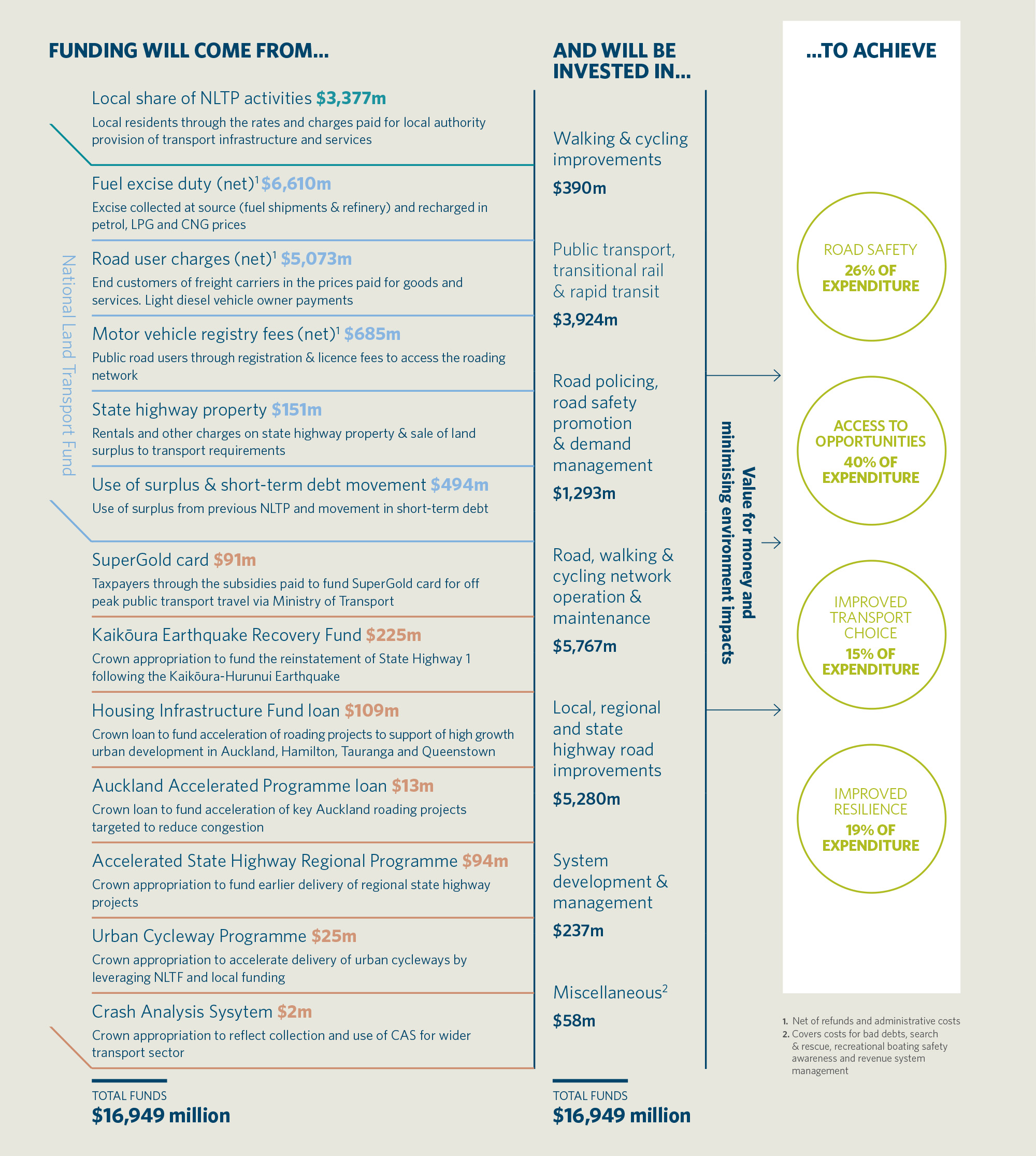Do we need to think differently about transport funding?
As new research finds “failure to deliver” from one of Wellington’s most costly recent transport investments, Greater Auckland’s Matt Lowrie asks and answers…
Around $5.5 billion a year is spent on transport in New Zealand. This is a lot of money and usually makes up the largest proportion of budgets for local councils, as well as being the fourth or fifth largest area of spend for central government. Most of that money comes from fuel taxes, vehicle licensing fees and road-user charges – although a big chunk also comes from property taxes (in the form of local council rates) and from general government funding (itself largely from income taxes, company taxes and GST).
With the change of government in 2017 came quite a different approach to thinking about what we as a country are trying to achieve from this investment in the transport system. Instead of a narrow focus on conventionally measured transport outcomes, like faster freight journeys, travel time savings and reduced vehicle operating costs, the current Government Policy Statement focuses more on the role transport plays in contributing to the big outcomes we want to see as a society. Like improved safety and public health, more vibrant and liveable cities, better access to social and economic opportunities, thriving regions and reduced environmental harm.

This new approach of investing in transport to deliver the greatest broad benefits to society is a challenge to how the transport funding system has been set up, and also an important challenge to how we think about transport funding more generally. In a simple sense we can think about transport investment in two different ways:
- As a ‘user pays’ system where fuel taxes and other charges are essentially an “access payment” to use the transport system, and money raised from these charges needs to be spent on investments that benefit those who pay the charge.
- As just another part of government where fuel taxes and other charges are just another form of taxation, and money raised from these charges should be spent on investment that provide the greatest overall benefit to society.
Interestingly, while the up front strategic part of the GPS talks a lot about the need for transport investment to deliver on key broad outcomes, funding principles at the back of the document remain relatively fixed in the ‘old mode’ with a user-pays focus. I’ve highlighted what I think is perhaps the most ‘out of date’ principle below:

This distinction may at first seem a bit academic, but it plays out in some really practical ways when you start thinking about investments we make in say looking after footpaths, or making our streets nicer places to be in – not just faster places to move through. These are all well established and sensible things to spend transport money on, but often end up running into brick walls in terms of their funding because someone gets concerned about whether or not the investment is creating a ‘transport benefit’.
For example, amenity upgrades to footpaths in town centres, or even footpath renewals have generally not received NZTA funding. This is despite pedestrians obviously making up a critical part of the transport system and creating safe, attractive and walkable streets being key to some of the broader outcomes we want as a society through developing vibrant cities and towns and a more healthy society. The GPS sends a strong signal that these kind of investments should be funded from ‘traditional transport funding’ – so it’ll be interesting to see which part of the GPS is given greater weight:

I think it would be good for the Government to more explicitly move to thinking about transport charges as just another form of taxation and transport investment as being just another area of expenditure where the goal is to maximise overall benefits to society. My main reason for this is that I don’t think the current system has worked, as I explained in detail in this post last year.
In some respects the impact and benefits of all this spend is obvious. Auckland now has a functioning rail system, a completed motorway network, a great Northern Busway, integrated ticketing, a few high-quality cycleways and more. But in other respects we have gone backwards:
- Despite enormous efforts, congestion is getting worse rather than better.
- The road toll has spiked upwards alarmingly over the past few years, increasing more rapidly than population or total travel.
- Carbon emissions from the transport sector have continued to grow, despite commitments to reduce emissions.
There are a few obvious contributors to these issues. In a fast growing city like Auckland “standing still” can be an achievement. But I think this is only part of the story. To provide an analogy, it is as if we increased education spending four-fold, had really complicated systems in place to project where that money would be best spent, but then found out a decade later that kids were actually getting a poorer education.
Ultimately we should expect more from such a massive spend on transport and we need to understand what’s stopping this from happening. Given the huge amount of spend on transport over the past decade, at a high level it’s difficult to say that we have achieved “value for money” in an overall sense.
We should demand more from such a large area of public expenditure. Spending billions of dollars a year should show up in meaningful improvements to the outcomes that transport affects, and which are important to us as a society. To get there, I think it will be necessary for us to think differently about transport funding.
See the original post here on Greater Auckland

Leave a comment